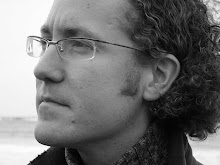For the last decade there has been a raging argument in the field of visual cognition about how much of the visual world is represented and stored for future reference. Evidence from Change Blindness studies (see a Levin and Simons 1997 summary here) in which subjects were shown to miss very large changes of the visual scene across a disruption (e.g. an eye movement, a blanking of the screen, or physical obstruction) seemed to indicate that the subjects were storing very little visual information over time. This evidence seemed to conflict with everybody’s natural intuition that our experience of the visual world is a rich and lasting one. The work John Henderson and colleagues have been doing over the last few years has gradually reconfirmed this intuition by showing that change detection does occur when less explicit measures are used. His results indicate that visual memory is a natural result of scene viewing with attended and fixated regions of the scene receiving a high degree of representation. These results are very important to the area of film cognition and specifically understanding perception across edits. Editing is an explicit manipulation of the audience’s attention and as such we will better understand perception across edits by understanding what visual information is represented across shifts of attention.
Whilst John was visiting




No comments:
Post a Comment